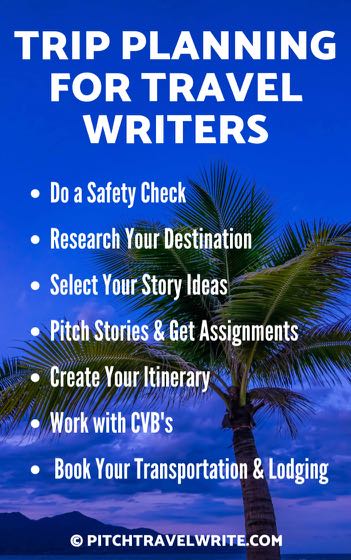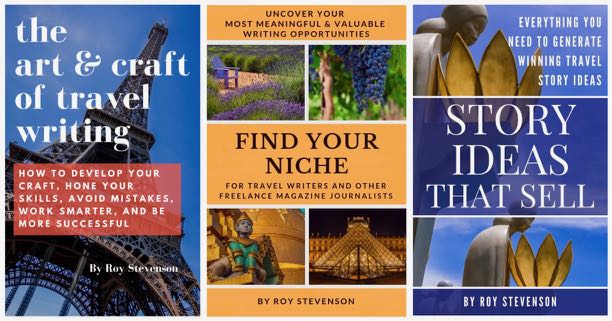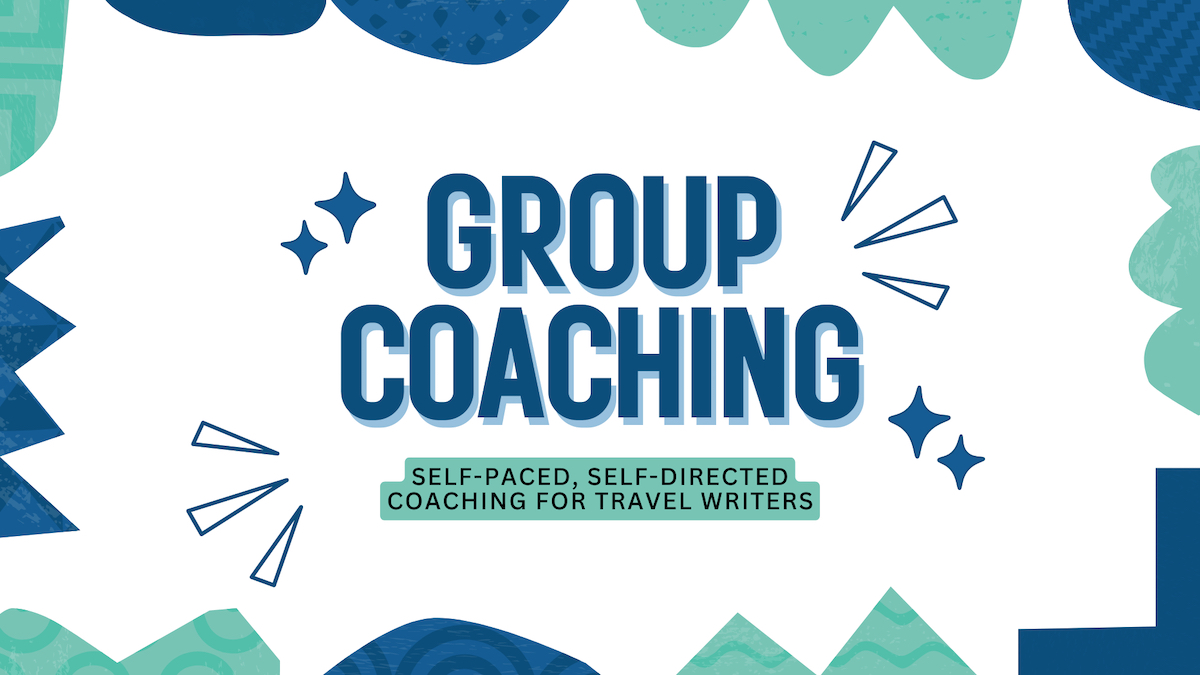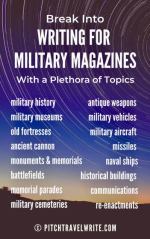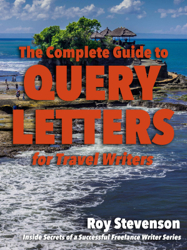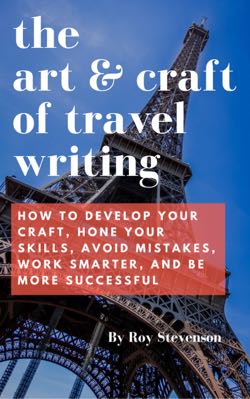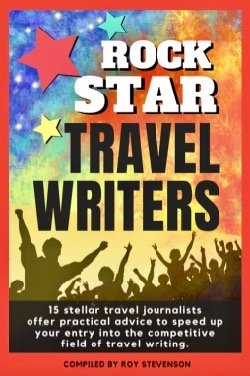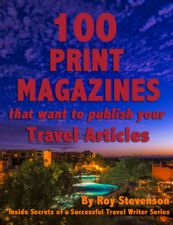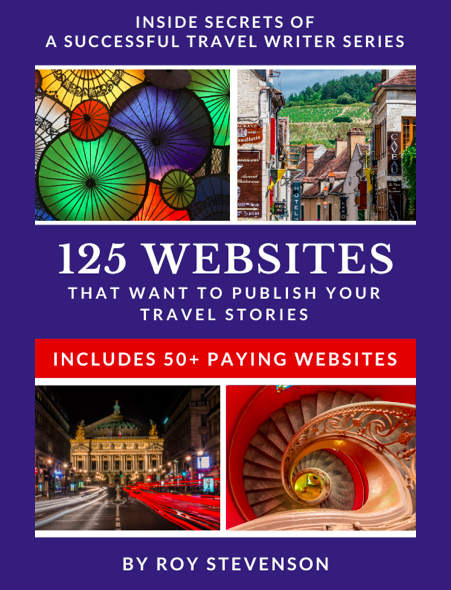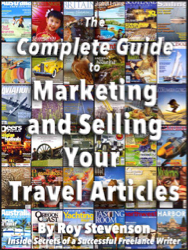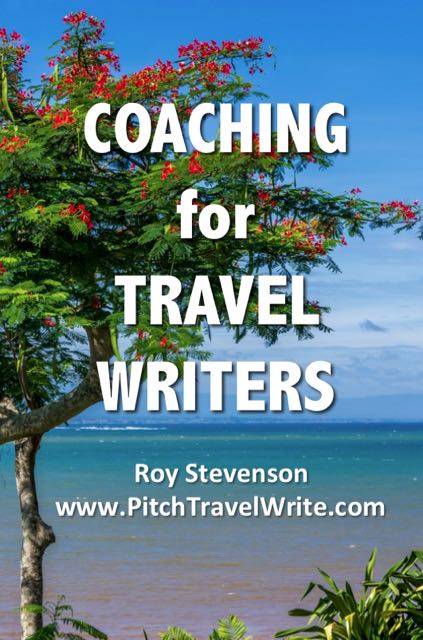Trip Planning for Travel Writers
By Roy Stevenson
Rigorous trip planning is an important part of any major domestic trip or international journey. Travel writers need to be well prepared to get the most out of every trip.
Since travel
writing is a business, you want to make sure you're planning the trip with your assignments in mind. If you just "wing it", you'll likely make some bad decisions and take a hit in your wallet. And you might not spend enough time in the right places to do justice to your assignments.
To thoroughly plan your important trips, here are seven steps you can follow:
Trip Planning includes a Safety Check
Before starting your preparations, you'll want to check safety conditions in your potential destination. It goes without saying that you don’t want to travel to a war zone or political flashpoint. Certainly some journalists will want to go to these places, but usually not travel writers. We tend to enjoy going to more pleasant destinations.
The U.S. Department of State website is a good reference for checking your potential travel destination for any travel advisories. You can find travel alerts for short-term conditions such as cyclone season in the South Pacific, or spring break in Mexico, for example. There are travel warnings for long-term conditions such as dangers and/or instability of a country. And you can get country-specific information for any country in the world, friendly or otherwise.
This website is also a good starting point for all kinds of information such as entry/exit requirements, passport and visa requirements, safety and security, medical facilities, and much more. Although the website is written primarily for U.S. citizens traveling abroad, it’s still got valuable information about every country that could be beneficial no matter where you are from.
The point is – consider travel safety as your first step in trip planning. Here are my top ten travel safety tips for your next trip.
Research Your Destination
Once you've decided on your destination, your next “trip planning” task is to gather information about that destination. You'll need a solid reference base in order to dream up potential story ideas and research is the foundation.
Use guidebooks, search the internet, and
contact the destination tourist office for information.
I like to do an internet search for articles by other travel writers to see
their take on the place. Reading articles by other writers gives you an
idea about what’s already been written about the place. The aim of this exercise is to trigger
some new ideas.
For an international trip, it takes me several days to gather my reference material and read through
it. But spending this time doing research at the beginning really pays off.
Select Your Story Ideas
From your research and reading, it’s time to select potential stories to pitch to magazines. Yes, that is plural. You need to be thinking in terms of multiple stories, not just one. And you need to be thinking in terms of multiple publications, print and online.
Maybe there was a time when you only needed one
story for one trip, but not these days. Unless you’ve landed an
assignment with all expenses paid, you want to make the trip profitable by selling several stories and landing multiple assignments. You can get ideas about story ideas that sell in my ebook.
The
more assignments you have in-hand, the more money you'll make from
your trip. On one of my annual trips to Europe I rounded up 23 articles
for 11 different magazines, including one article that paid over
$1,000. Although this sounds overwhelming and it did keep me busy, I made a profit on the trip and really got around Europe.
Also, the more assignments you have in-hand prior to the trip, the more likely you can request and will be offered comps to cover some of your costs. If you're not sure how to go about asking for assistance from CVBs (Convention & Visitors Bureaus) you can learn more in my book How to Land Press Trips and Fam Tours.
Then start pitching your story ideas. This is a big topic and you can find more information about how to get your work published here.
Create Your Itinerary
Now that you know what you want to see and have selected your places, it’s time to flesh out a tentative day-by-day schedule. On this calendar, you list the places you’ll be seeing each day. Having a detailed, daily itinerary is especially important for overseas trips, so you can make the most of your time.
Your trip planning should also include estimating the
amount of time needed to visit each attraction. This builds some
structure into your day so that you won’t get so caught up seeing one
place and end up missing the others.
Flexibility is also important. Try not to book yourself too tightly – often
there are things you’ll want to see that you didn’t plan for and you
need some time to build these things in. Some things take more time
than you planned, either because of transport or crowds. Or perhaps a place is
even more interesting than you anticipated and you need more time there.
Be sure and leave yourself a little breathing room to enjoy your visit.
Food and Lodging
With the details done and a few assignments in hand, create a list of cities you will visit if you're going to more than one place. Work with CVBs once you have assignments so they can help you with lodging and food. Otherwise, do a
search for accommodations that fit within your budget.
If
I’m paying for the lodging, my trip planning includes looking for
budget accommodations near the tourist hot spots, usually close to the
center of the town. Although accommodation costs tend to be lower
further away from the center of town, you’ll end up wasting time
catching transport into the city center and sometimes this adds quite a
bit to the cost of the trip. Time is money when you’re on the road, so
find convenient places to stay.
This
is where a good map and good internet resources come in. I use travel
websites to start my search and then work from
there. Read reviews for hotels you’re considering and locate them on
the map before making your bookings.
If
you're writing about food and restaurants, your trip planning should
include selecting the places you'll be writing about. If these are
trendy, popular restaurants make sure you book reservations in advance.
If you’re not writing about food, then you can wait until you get there
and find places where the locals eat. Stay away
from tourist restaurants. You can also find grocery stores or, depending on where you're going, street food.
Book Your Transportation
Your trip planning isn’t complete until you arrange your transportation. I do this after I've put together my draft itinerary so I know exactly how long I need to stay in each place.
Obviously, you
are sometimes limited by how many days you can get away – but changing
airfares these days is very costly. Book your transportation when you
feel confident that you’ve included everything you need to see in your
itinerary.
Booking
transportation includes round trip air tickets and internal flights
within the country or region you’re visiting, if needed. It also
includes rental cars, trains and/or coach bookings. Arranging as many
of these things in advance makes it more likely to have a smooth trip
once you arrive at your destination.
Trip Planning Summary
So just a quick summary of my trip planning process for international trips and major destinations.
- Do a safety check
- Research your destination
- Select potential story ideas
- Pitch your stories & get assignments
- Create your itinerary
- Work with CVBs for assistance
- Book lodging & transport
Following the above steps will ensure that you make the most of your trip once you’re there and you'll get the most profit from your travel writing.
Break into Travel Writing
with the Creative Pack
The Creative Pack includes 3 eBooks that are the starting point for every travel writer: dreaming up unique story ideas that you can sell, finding the best writing niches for you based on your interests, passions and experience, and the art & craft of travel writing. They’re the pieces of the puzzle that come before you ever write a query letter to sell your articles to magazine editors.
If you're just getting started in travel writing, this group of resources will help you improve your craft, generate story ideas that sell, and develop your own unique and meaningful niche.
These eBooks can be purchased separately, but when you buy the bundle you'll save more than 10% off individual prices! Learn more here ...
Related articles that will interest you:
Preselling Your Travel Stories
Travel Guidebooks vs The Internet: Is One Better than The Other?
Your Travel Itinerary: How to Maximize Your Overseas Trip
Guided Tours: What's So Good About Them?

Roy Stevenson is a professional travel writer and the author of www.PitchTravelWrite.com. Over the past ten years, he’s had more than 1000 articles published in 200 magazines, trade and specialty journals, in-flights, on-boards, blogs and websites and has traveled on assignment around the U.S. and to dozens of international destinations.
IF YOU ENJOYED THIS POST, GET UPDATES. IT'S FREE.
